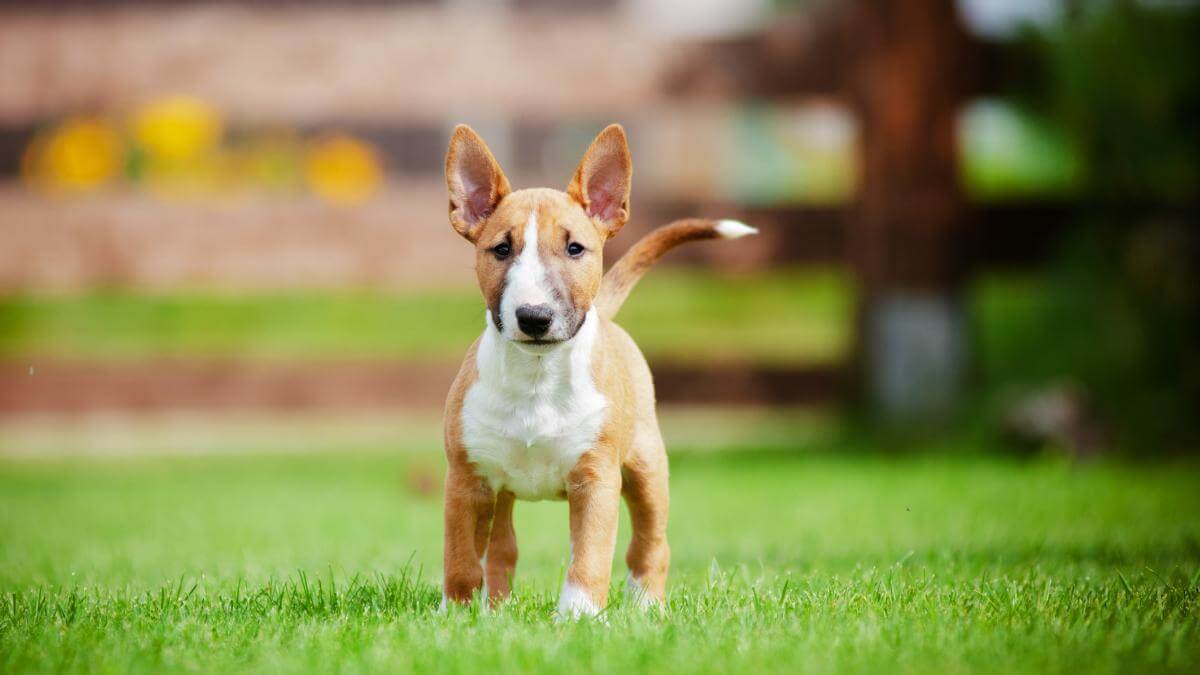
Home » The History of the Miniature Bull Terrier

This article was originally published in Showsight Magazine, June 2011 issue.
To understand how the Miniature Bull Terrier came about one must go back to the origin of the Bull Terrier and a time of Blood Sports in England in the 1800’s. Bull baiting had been outlawed but the desire to have dogs fighting something continued. Dog versus dog, rat, badger or almost anything that would fight back were common in undesirable areas. Mr. James Hinks, who came from Birmingham, put himself on a path to produce a stylish white dog that would become a gentleman’s companion, also known as “The White Cavalier”. A dog that was not inclined to start a fight but if provoked would finish it. The breed known as a Bull Terrier became very popular. Size was always variable in the breed. The foundation coming from the White English Terrier, old fashioned Bull Dog and Dalmatian.
Some Greyhound, Spanish Pointer, Foxhound, Borzoi or Collie was thrown in to give the length of head and small eye. No one can say for sure; only that these breeds were available to James Hinks at the time. In 1862 he showed his pure white Bull Terrier, “Puss”. This resulted in that famous match at Tuffers in Longacre where Puss, at 40 pounds, battled a much heavier opponent of the old style Bull and Terrier weighing 60 pounds. One half hour later the other dog was dead. Mr. Hinks claimed his five pounds and the case of champagne on which the wager was fought. The next day Puss won her class judged best in looks and condition. The Bull Terrier Club was founded in 1887 with classes at many shows divided above or below 16 pounds. Mr. E.M. Shirley, president of the Kennel Club (U.K.) bred his dogs below the 25-pound range. The even smaller version, some as small as two and a half pounds, lacked the sturdy good looks of the larger dogs. Most had bulgy eyes and apple domed heads. While the larger Bull Terrier gained favor with the Victorian gentleman, his female counterparts briefly entertained the smaller ones to be lapdogs.
Sadly this was not to be successful as they were constantly searching for rats or mice in the sitting room. Which was something no Victorian woman would find entertaining or expect from their companion. A set back for the breed also occurred when ear cropping was decreed illegal in 1895. Drop ears replaced the smart looks of the cropped ear until the breeders could get consistent results with upright ears. A famous print “ The Guards “ by Maude Earle shows a trio of Bull Terriers in 1915 almost achieving a natural erect ear. The Millennium handbook from the Miniature Bull Terrier Club (U.K.) has a list of shows in the 1890’s where Toy Bull Terriers were shown. From 1911-1917 there were no classes for Toy Bull Terriers. In 1918 the Kennel Club closed the stud book for the Miniature Bull Terrier. Off they went to work on farms where they excelled at dispatching vermin of all types. There are reports that they were used to go to ground after foxes and badgers. No surprise to those of us that enjoy doing earthdog events with our modern day Mini Bulls here in the United States.